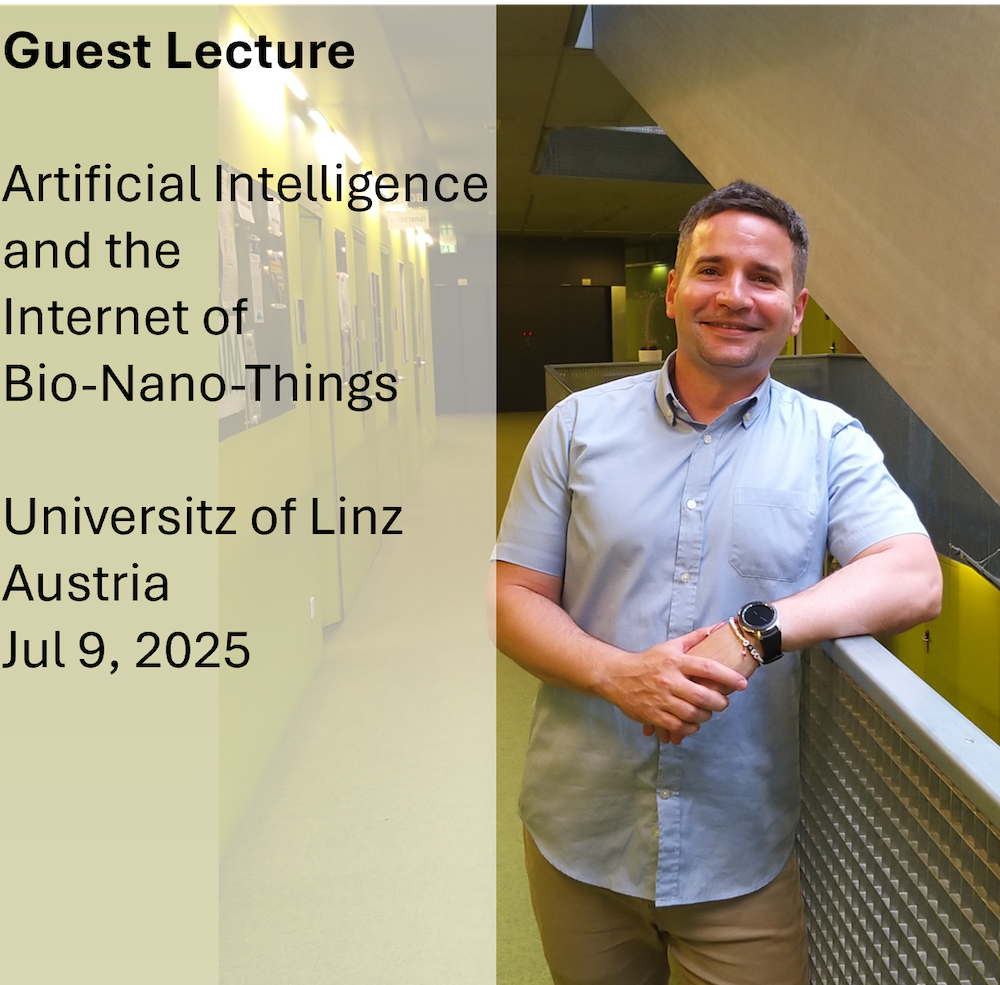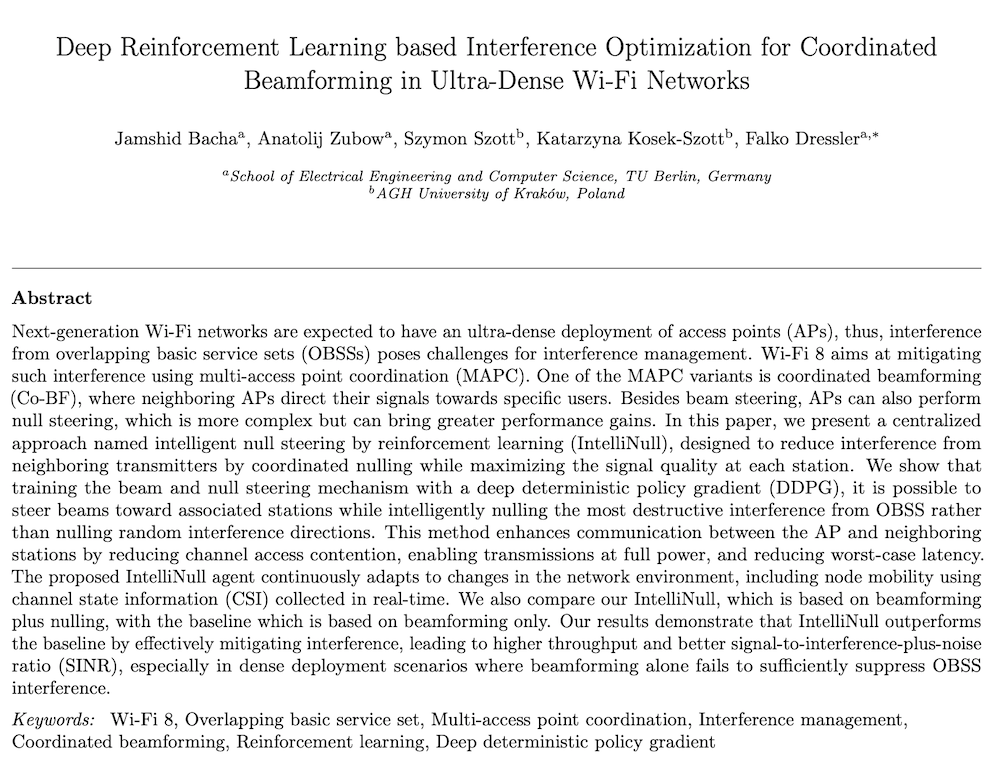Literature Database Entry
laskos2023mobile
Christos Laskos, "Mobile mmWave Beam Tracking using Deep Q-Network Learning," Master's Thesis, School of Electrical Engineering and Computer Science (EECS), TU Berlin (TUB), December 2023. (Advisors: Anatolij Zubow and Sigrid Dimce; Referees: Falko Dressler and Thomas Sikora)
Abstract
With the rise of millimeter-wave (mmWave) communication systems, accurate beam tracking is a requirement for reliable link performance, especially under mobility. In this thesis, we create a mmWave beam tracking system using a Deep Q-Network (DQN) that tracks a moving mobile station. As inputs to the DQN, we use the signal strength, speed, and direction of the mobile station. Using these simple inputs, the base station can track the mobile station along its path. Unlike purely simulation-based solutions, we use transfer learning to apply DQN beam tracking to a real-world scenario created in our lab. For the first time, we show that DQN-based approaches perform well in real-world scenarios, and with the usage of transfer learning, we achieve an increase in tracking performance and a decrease in training time compared to the conventional learning approach.
Quick access
Contact
BibTeX reference
@phdthesis{laskos2023mobile,
author = {Laskos, Christos},
title = {{Mobile mmWave Beam Tracking using Deep Q-Network Learning}},
advisor = {Zubow, Anatolij and Dimce, Sigrid},
institution = {School of Electrical Engineering and Computer Science (EECS)},
location = {Berlin, Germany},
month = {12},
referee = {Dressler, Falko and Sikora, Thomas},
school = {TU Berlin (TUB)},
type = {Master's Thesis},
year = {2023},
}
Copyright notice
Links to final or draft versions of papers are presented here to ensure timely dissemination of scholarly and technical work. Copyright and all rights therein are retained by authors or by other copyright holders. All persons copying this information are expected to adhere to the terms and constraints invoked by each author's copyright. In most cases, these works may not be reposted or distributed for commercial purposes without the explicit permission of the copyright holder.
The following applies to all papers listed above that have IEEE copyrights: Personal use of this material is permitted. However, permission to reprint/republish this material for advertising or promotional purposes or for creating new collective works for resale or redistribution to servers or lists, or to reuse any copyrighted component of this work in other works must be obtained from the IEEE.
The following applies to all papers listed above that are in submission to IEEE conference/workshop proceedings or journals: This work has been submitted to the IEEE for possible publication. Copyright may be transferred without notice, after which this version may no longer be accessible.
The following applies to all papers listed above that have ACM copyrights: ACM COPYRIGHT NOTICE. Permission to make digital or hard copies of part or all of this work for personal or classroom use is granted without fee provided that copies are not made or distributed for profit or commercial advantage and that copies bear this notice and the full citation on the first page. Copyrights for components of this work owned by others than ACM must be honored. Abstracting with credit is permitted. To copy otherwise, to republish, to post on servers, or to redistribute to lists, requires prior specific permission and/or a fee. Request permissions from Publications Dept., ACM, Inc., fax +1 (212) 869-0481, or permissions@acm.org.
The following applies to all SpringerLink papers listed above that have Springer Science+Business Media copyrights: The original publication is available at www.springerlink.com.
This page was automatically generated using BibDB and bib2web.





